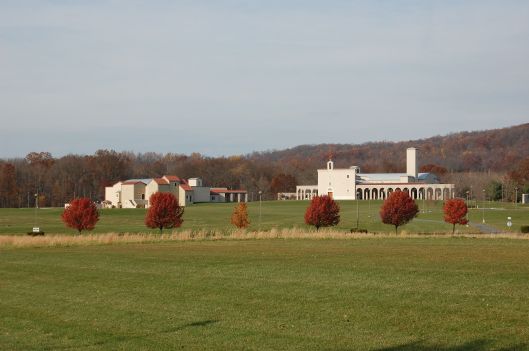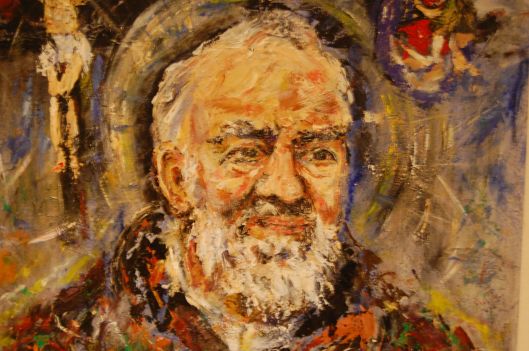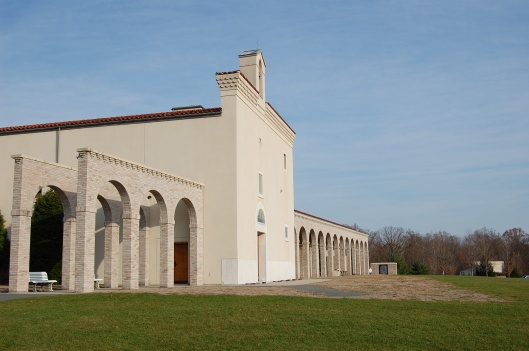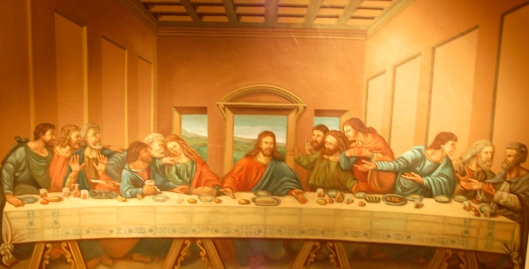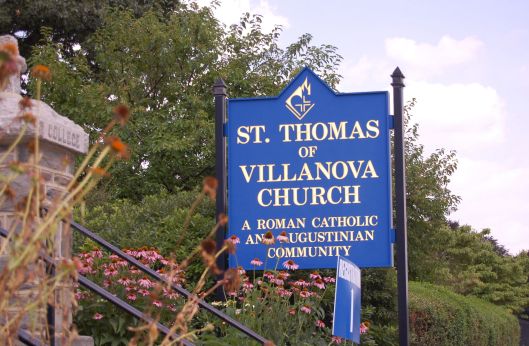
Your righteousness, God, reaches to the heavens, you who have done great things. Who is like you, God? – Psalm 71:19

At that time Jesus exclaimed: “I give praise to you, Father, Lord of heaven and earth, for although you have hidden these things from the wise and the learned you have revealed them to little ones”. – Matthew 11:25
It’s the Solemnity of Peter and Paul, June 29th, a feast day of the highest magnitude at the Cathedral Basilica of Saints Peter and Paul in Philadelphia, Pennsylvania.

Saint Peter.
From marble mosaic on the Sanctuary wall at the Cathedral Basilica of Saints Peter and Paul, Philadelphia PA. In the background is Saint Peter’s Basilica, a major basilica in Vatican City, Rome.
You are Peter and upon this rock I will build my Church, and the gates of the netherworld shall not prevail against it. – Matthew 16:18
And He said to them, “But who do you say that I am?” And Peter answered and said, “You are the Christ, the Son of the living God.” – Luke 9:20

Saint Paul.
From marble mosaic on the Sanctuary wall at the Cathedral Basilica of Saints Peter and Paul, Philadelphia PA. In the background is Outside-the-Walls Basilica, a major basilica in Rome.
I want you to know, brothers and sisters, that the gospel I preached is not of human origin. I did not receive it from any man, nor was I taught it; rather, I received it by revelation from Jesus Christ. – Galatians 1:12

The Assumption of the Blessed Virgin.
Inside the great dome, at the center, is Mary ascending into Heaven. Around Mary are panel paintings called the “Angels of The Passion. Within each group of angels is an emblem of the Passion; the cross, crown of thorns; twelve in total. The stained glass windows, detail is not shown, are of Blessed Mary holding the Child Jesus, with Saint Peter and Saint Paul on each side. The remaining stained glass windows are Doctors of the Church, including friends of ShrineTower; St. Augustine and St. Basil. The four pillars of the great dome are the four Evangelists: Matthew, Mark, Luke and John.

The Assumption of the Blessed Virgin (cont’d).
Closer view of the great dome of the Assumption of the Blessed Virgin. Several of the “Angels of The Passion” panel paintings can be seen.
Mary Mother of God is the patroness of the United States of America.

Sacred Heart of Jesus.
The Sacred Heart of Jesus is the patron of the Archdiocese of Philadelphia.

The Umbralino. (Italian for “umbrella”)
The umbralino in the Sanctuary next to the Cathedra or Bishop’s chair. Whenever a Pope visits a basilica, its umbralino is opened. It was last opened on Pope Francis’s visit to Philadelphia in September, 2015.

The Tintinnabulum.
A small gold bell is hanging below an enamel plate with a picture of Saint Peter and Saint Paul. On the other side of the plate is a picture of the Cathedral Basilica. At the top of the tintinnabulum is the papal tiara and Keys of Heaven. If Pope Francis were to celebrate the Mass at Saints Peter and Paul Cathedral Basilica, the tintinnabulum would be used to lead the procession down the Basilica’s main aisle.

Ciborium – View Looking Up.
In the center of the underside of the ciborium is the Holy Spirit symbolized as a dove. The mosaic carries in Latin an inscription which translates: “In every place there is offered and sacrificed in My Name a clean oblation.” From Malachias 1:11.
Story of St. Paul follows from a stained glass window in the apse:

Paul’s Conversion
As he was traveling, it happened that he was approaching Damascus, and suddenly a light from heaven flashed around him; and he fell to the ground and heard a voice saying to him, “Saul, Saul, why are you persecuting Me?” – Acts 9:3-4
“Who are you, Lord?” Saul asked.
“I am Jesus, whom you are persecuting,” he replied. “Now get up and go into the city, and you will be told what you must do.”
The men traveling with Saul stood there speechless; they heard the sound but did not see anyone. Saul got up from the ground, but when he opened his eyes he could see nothing. So they led him by the hand into Damascus. For three days he was blind, and did not eat or drink anything. – Acts 26:15-16

Paul Preaching to the Athenians (Pagens in Greece).
Then Paul stood in the midst of the Areopagus and said, “Men of Athens, I perceive in all things you are very religious; for as I was passing through and considering the objects of your worship, I even found an altar with this inscription: TO THE UNKNOWN GOD. Therefore, the One whom you worship without knowing, Him I proclaim to you.” Acts 17:22-23

Paul was beheaded in Rome.
“These are the ones, who living in the flesh, planted the Church with their blood; they drank the chalice of the Lord, and became friends with God.” Entrance Antiphon, Feast Day Mass.

Saint Paul at the front entrance to the Basilica Cathedral of Saints Peter and Paul, Philadelphia Pennsylvania.
In Archbishop Chaput’s sermon on the Feast day Mass of June 29th at the Basilica, he said most people think of Paul’s symbol, the sword, for his martyrdom, since he was beheaded by the Romans. It really is the sword of the Spirit, the Word of God where the sword penetrates our heart.
And take the helmet of salvation, and the sword of the Spirit, which is the word of God. – Ephesians 6:17
Story of St. Peter follows from a stained glass window in the apse:

Jesus Giving Peter the Keys to Heaven.
“I will give you the keys of the kingdom of heaven; and whatever you bind on earth shall have been bound in heaven, and whatever you loose on earth shall have been loosed in heaven.” – Matthew 16:19

Peter Being Called by Jesus.
And Jesus said to them, “Follow Me, and I will make you become fishers of men.”

Peter’s crucification.
Peter was crucified upside down, at his request, according to Origen of Alexandria.

Saint Peter at the front entrance to the Basilica Cathedral of Saints Peter and Paul, Philadelphia Pennsylvania.
Peters symbol are keys, which represent Jesus’ saying, “I will give you the keys of the kingdom of heaven.”

Peter in chains teaching the other prisoners.
On the very night when Herod was about to bring him forward, Peter was sleeping between two soldiers, bound with two chains, and guards in front of the door were watching over the prison. And behold, an angel of the Lord suddenly appeared and a light shone in the cell; and he struck Peter’s side and woke him up, saying, “Get up quickly.” And his chains fell off his hands.- Acts 12:6-7

Successor to St. Peter: Pope Francis.
Pope Francis at Mass for the Solemnity of Saints Peter and Paul. Photo credit – VaticanRadio.com

Cathedral Basilica of Saints Peter and Paul.
Building community.

St. Peter.

Aura of St. Peter

Aura of St. Paul
I have competed well; I have finished the race; I have kept the faith. – St. Paul 2 Timothy 4:7








